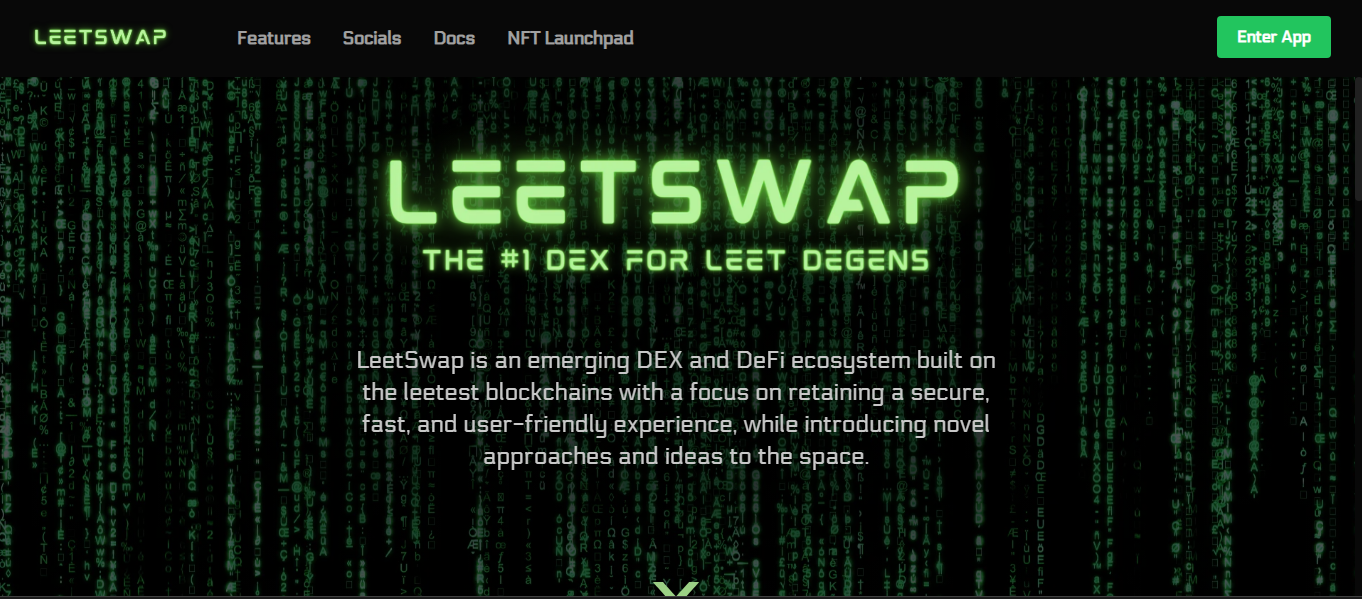LeetSwap - Exchange Review

LeetSwap is an ambitious DeFi ecosystem live on Canto, Base, opBNB, Linea, zkEVM, and more. It's built for yield farmers and power users, blending swaps, liquidity mining, staking, and community token support. But with low volume, past exploits, and multi-chain complexity, it’s not for the faint-hearted.
Multi-chain AMM deep dive
LeetSwap runs AMM pools across a range of chains - Canto, Base, opBNB, Linea, Manta, Scroll, Shibarium, and Polygon zkEVM. Total value locked peaks around 110k dollars on Base, 68k on opBNB, and far less on other networks. It delivers methodical multi-chain access, but volumes are light and fragmented.
Dual-token farms and staking
Liquidity providers earn rewards in LEET and occasionally in chain-native tokens, offering dual-token yield. You can stake LEET for xLEET and auto-compounding rewards. Farms are structured to incentivize early liquidity and long-term participation.
Security history and exploits
In August 2023, LeetSwap paused its Base deploy due to a liquidity exploit that drained about 342 ETH - roughly 624k dollars. Code was paused, some assets were recovered, but this revealed protocol-level risk. Since then, volumes remain low - currently around 110k TVL on Base.
UI, tools, and user experience
The interface is minimal and responsive, built for experienced DeFi users. You connect a Web3 wallet, pick pools, stake, or claim rewards. No fiat on-ramps, no mobile app. If you’ve managed multi-chain wallets, you’ll get by. Beginners may find it overwhelming and under-documented.
Liquidity and volume challenges
LeetSwap peaks at 110k dollars TVL on Base, with other chains holding a few dozen thousand each. Cumulative volume sits around 1.4 million dollars per month. For comparison, this is tiny next to Uniswap or PancakeSwap, so expect slippage, thin depth, and fast-changing yields.
Governance and community incentives
Built with community governance in mind, LeetSwap issues farm incentives to bootstrap usage and offers grants for community tokens. It periodically launches new pools based on developer or DAO decisions. The model is lean and grassroots-driven.
Pros and cons
Pros
- Accessible across multiple emerging chains
- Dual-token farming rewards
- Staking (LEET to xLEET) auto-compounds returns
- Supports community token incentives via custom pools
- Open-source, adaptable ecosystem
Cons
- Very low TVL and liquidity
- Historic exploit on Base chain
- Very technical, with no hand-holding or fiat support
- UI is basic and geared toward experienced users
- Multi-chain complexity adds risk and friction
Who it fits - and who it doesn’t
Ideal for:
- DeFi builders active across Canto, Base, opBNB, Linea, etc.
- Yield seekers comfortable with new protocols
- Users who want dual-token and community farm rewards
- Developers issuing tokens or launching pools
Not for:
- New DeFi users needing simplicity and tutorials
- Traders who require deep liquidity or low slippage
- Those wanting fiat integrations or mobile interfaces
- Anyone avoiding high smart-contract or multi-chain risk
Final verdict
LeetSwap is a niche powerhouse - a multi-chain playground for yield farmers and DeFi builders. Its features like dual-token farms, xLEET staking, and community incentives stand out. But the low volumes, past exploit, and technical complexity make it a tool for specialists, not general users.
If you fly between emerging chains and thrive on bootstrapping, LeetSwap offers genuine innovation. If you seek safety, depth, or mainstream ease of use, you’ll quickly hit its limits - and its learning curve.
Disclaimer
“This content is for informational purposes only and does not constitute financial advice. Please do your own research before investing.”
.png)







%203.svg)
%203.svg)




















